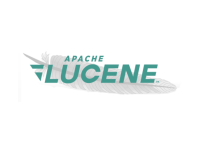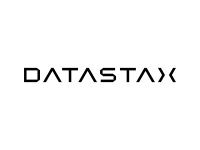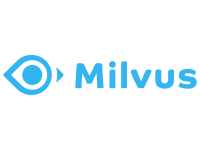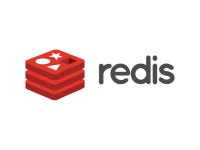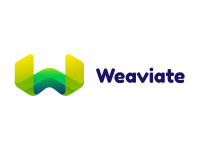
GPU Accelerated Vector Search and Clustering
cuVS Accelerated Vector Search and Clustering
Vector search underpins many data mining and artificial intelligence applications, requiring efficient handling of massive workloads.
Building on low-level CUDA primitives, the RAPIDS cuVS library contains optimized algorithms for approximate nearest neighbors and clustering, along with many other essential tools for accelerated vector search.
Improved Performance
cuVS provides higher throughput and lower latency for efficient index building and searching large vector spaces. This results in significantly reduced inference time and cost compared to traditional CPU-based solutions.
Flexible Integration
cuVS supports multiple languages including C, C++, Python, and Rust, making it easy to integrate into vectorized data applications. Additionally, cuVS provides interoperability between CPU and GPU, enabling index building on a GPU and searching on a CPU.
Advanced Algorithms
cuVS includes advanced algorithms for approximate nearest neighbor search that are performance-tuned for the latest compute architectures.
Scalability
cuVS enables databases to scale up and out for processing massive-scale vector search and clustering workloads with GPU acceleration.
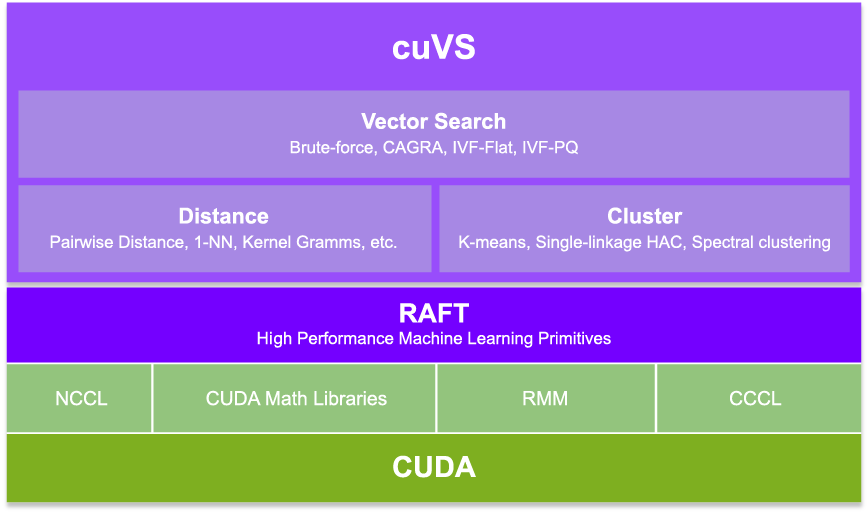
World's Fastest Vector Search
Leveraging the cuVS library, vector search operations achieve unmatched speed by delivering better index build times, higher throughput, and lower latency at every level of recall. cuVS exploits the parallel architecture of NVIDIA GPUs, allowing for deployment of complex algorithms like IVF-PQ, IVF-flat, and CAGRA. GPU-acceleration of vector similarity search sets benchmark records for large-scale, high-performance solutions.
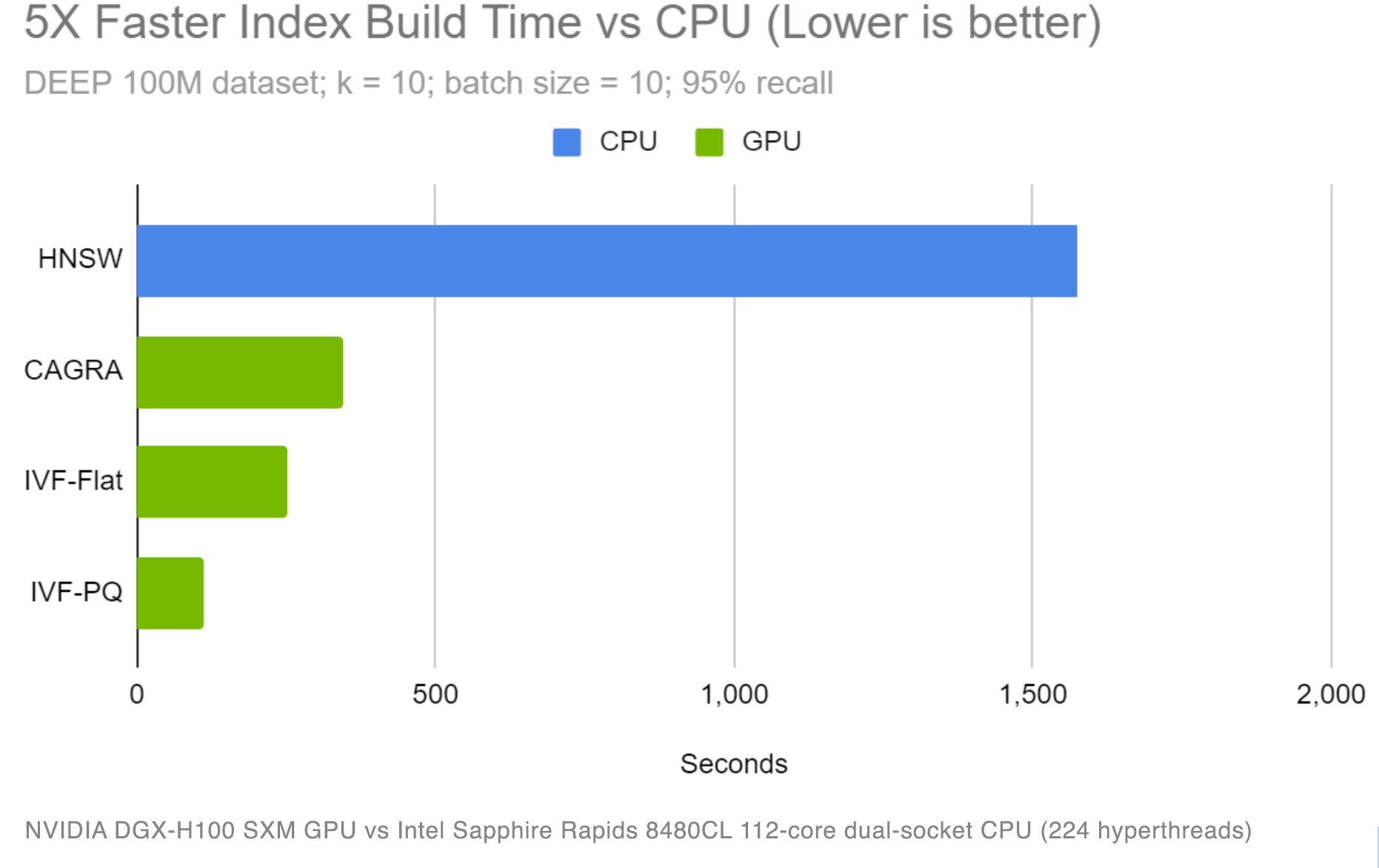
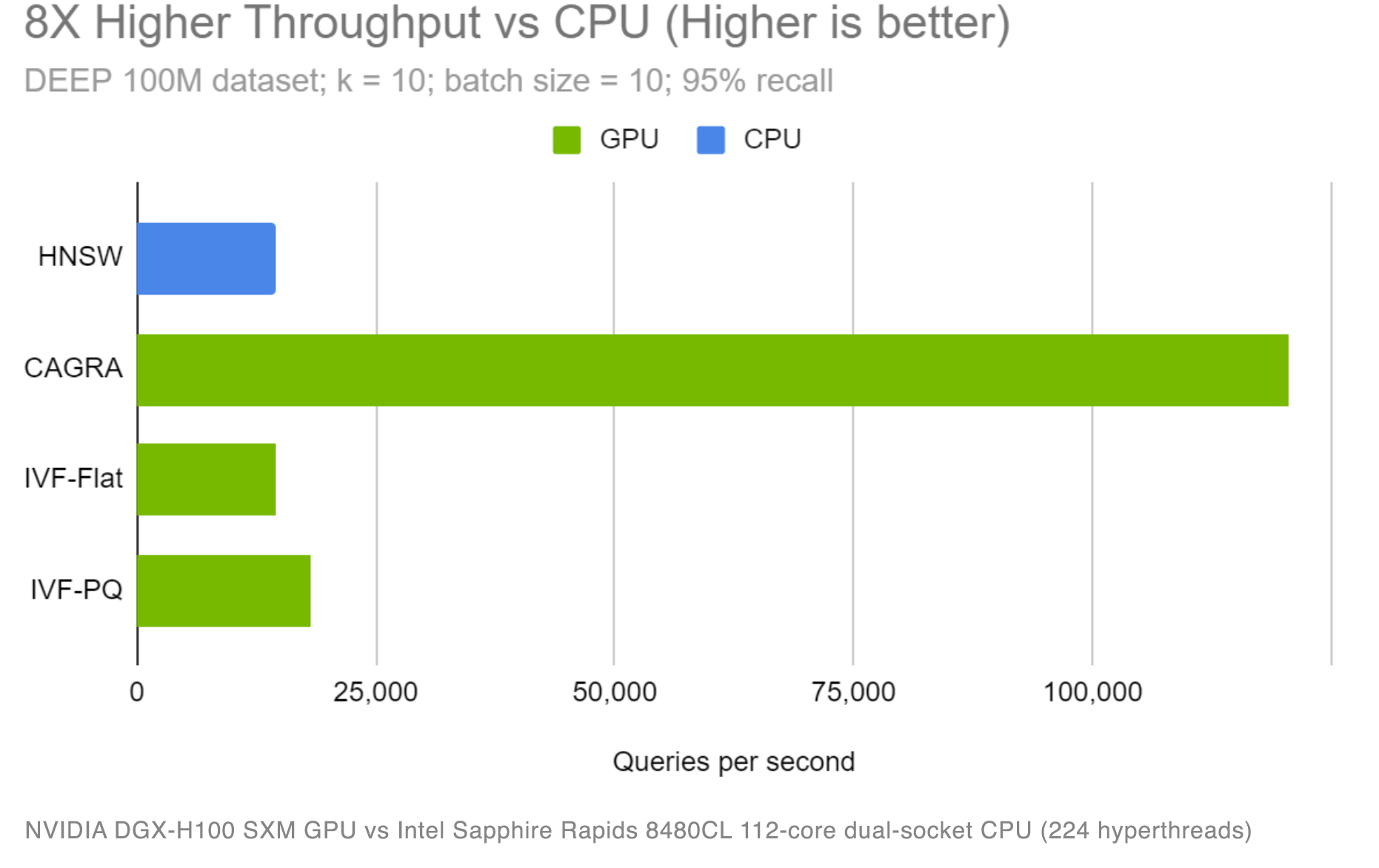
Empowering Vector Databases
with the Fastest Retrieval
NVIDIA integrates cuVS into vector search and database technologies delivering unparalleled speed and efficiency in information retrieval. Learn how to accelerate your vector database in the cuVS Getting Started Guide.
Use cases accelerated by Vector Search
Featured use cases across a broad domain of applications.
LLMs
Vector search accelerates the querying process in large language models, leading to faster response times. By quickly finding the nearest vectors in high-dimensional spaces, it enables efficient handling of complex language patterns, enhancing these models' overall performance and responsiveness.
Recommenders
In recommender systems, vector search plays a critical role in item matching. Accelerated vector search reduces latency and improves the quality of recommendations by efficiently searching through millions of potential matches, offering users a personalized and fast experience.
Computer Vision
For computer vision tasks like image recognition or object detection, vector search aids in quickly finding similar vectors, thus accelerating the classification process. With GPU-accelerated vector search, the process of matching features and identifying patterns is significantly optimized, enhancing computer vision systems' overall speed and accuracy.
Data Mining
Vector search forms the backbone for many important data mining algorithms, such as finding clusters, reducing dimensionality, and visualizing data points. GPU-accelerated vector search can take large machine learning and natural language processing workflows from hours to near real-time speeds, enabling important use-cases like hybrid search and anomaly detection.
Learn More
Find where to get more resources and connect with developers.
Open Beta
cuVS is in open beta and under active development. It's ready for wide use, but has a few known limitations and edge cases. You can learn more through the documentation, which also includes instructions for running cuVS ANN benchmarks on your system.
